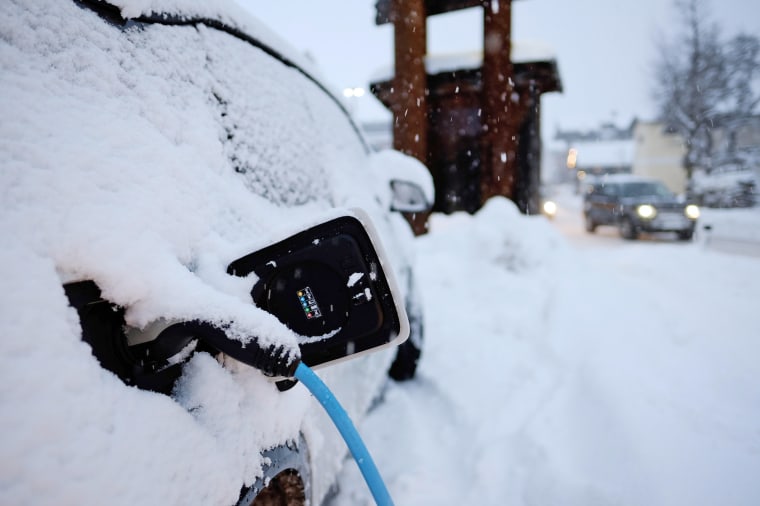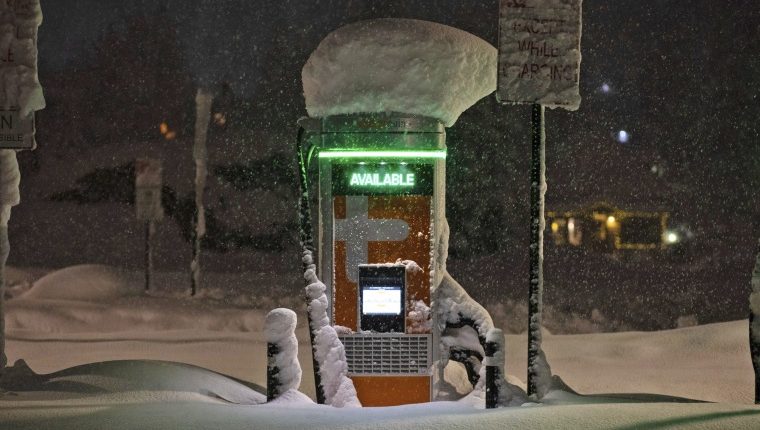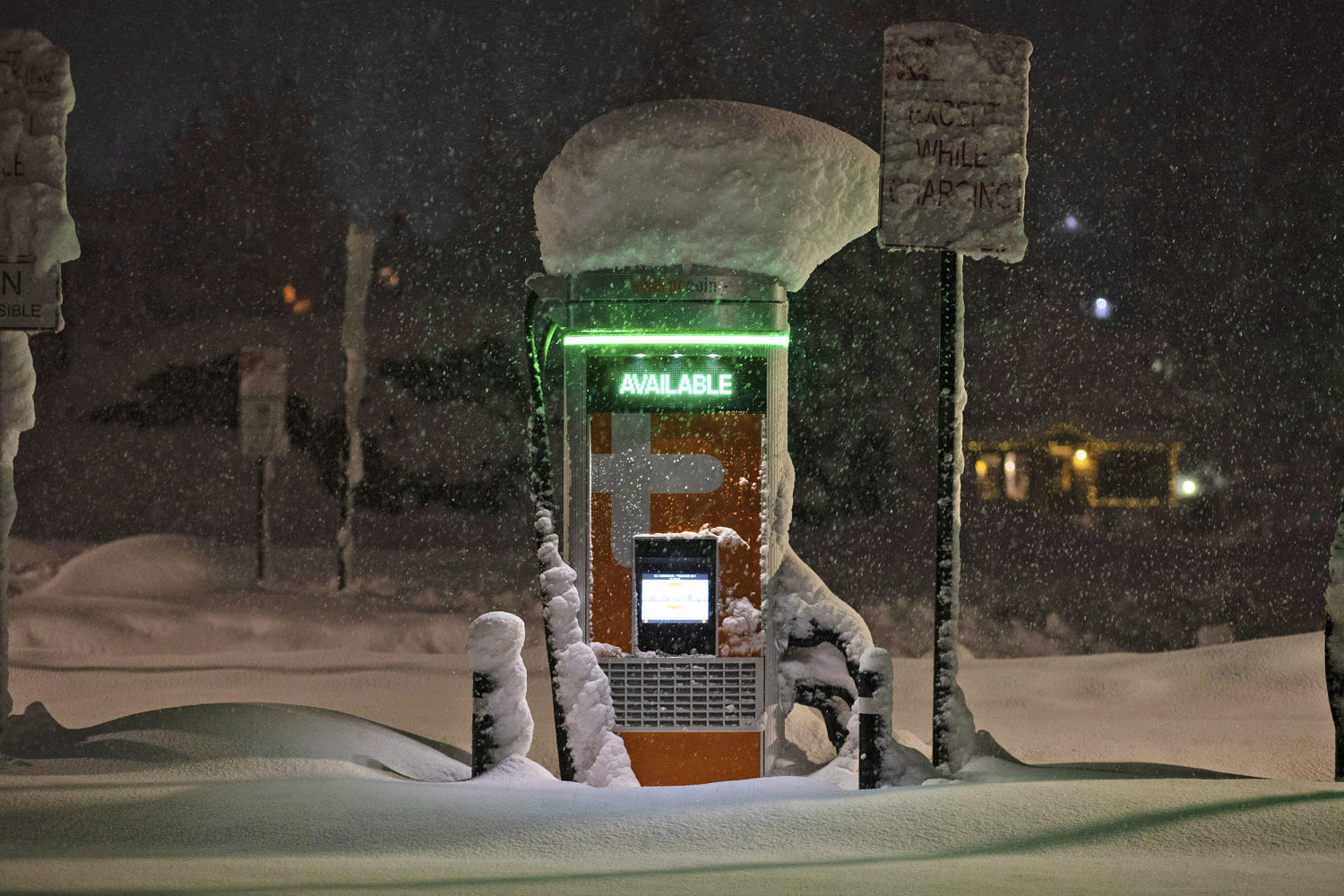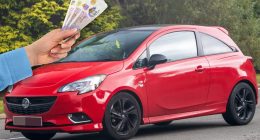Winter weather can cause bigger headaches for electric vehicle drivers than shoveling their driveways. Many are finding cold temperatures reduce their cars’ driving range.
Fully electric vehicles, which run exclusively on battery packs, typically lose an average of 41% of their range when outdoor temperatures drop to 20 degrees Fahrenheit and the heat’s cranked on, AAA researchers have found. That’s because batteries don’t work as efficiently in the cold and regulating cabin temperature can gobble up a significant amount of power, depending on how a car’s HVAC system is designed.
It was a rough time to start driving for Uber in Chicago this month, said Marcus Campbell, who signed up with the ride-hailing company last week using a rented car. Campbell said he has already found the frigid weather buffeting the Windy City can make for a longer workday and fewer fares, requiring him to spend several hours waiting his turn at a charging station and powering up.
“When I should be asleep, I’m outside charging my vehicle, falling asleep in my car,” he told NBC News’ Adrienne Broaddus. “I’m not making any money.”
Many drivers across the country are likely to face frustrations like Campbell’s this winter.
There are more EVs on American roadways than ever before, with a record 1.2 million sold nationwide in 2023, according to Cox Automotive. Sales are still rising, but some consumers have been put off by a dearth of charging infrastructure that remains a work in process. Now, the bitter cold sweeping parts of the U.S. is giving many current and would-be EV drivers another reason for “range anxiety.”

The way engines work plays a big part in how a car is heated, said Scott Case, the CEO of Recurrent, a company that measures EV battery performance. Around 10% of a gas engine vehicle’s energy is used for forward momentum, compared to 90% in EVs, he said. With all-electric models, “there’s not a lot of waste heat that you can just use to warm up the cabin,” Case said, which puts more onus on the battery to do so.
Auto industry experts said EVs built with heat pumps for warming their interiors will undergo less battery strain in cold weather. Most newer models have them, but less efficient “resistive” heaters are more common in older vehicles. Case estimated that EVs with heat pumps lose an average 20% of their range in extreme weather, compared with up to 40% in those without heat pumps.
There’s not a lot of waste heat that you can just use to warm up the cabin.
Scott Case, CEO of Recurrent
The age of a vehicle’s battery can also affect how it performs in cold temperatures, said Alex Knizek, Consumer Reports’ manager of automotive testing and insights.
“Batteries in your EV do degrade over time, just like your smartphone after you charge it and discharge it a bunch,” he said.
Consumer Reports’ testing of four popular EV models — the Hyundai Ioniq 5, the Volkswagen ID-4, the Ford Mustang Mach-E and the Tesla Model Y — also found significant battery depletion in cold weather. Battery range dropped 25% from spring to winter and 30% from summer to winter, with the researchers looking at temperatures near zero Fahrenheit for the coldest conditions and around 80 degrees in the summer.

In Chicago, tow truck driver David Birts said his company’s calls have increased substantially since Friday, mostly because of stuck EVs. “I have never seen this volume for electric cars,” he said.
Knizek noted that all cars lose some efficiency in extreme weather, especially when it’s very cold. But EVs, for now, lose more than their gas-burning counterparts. And the issue can be more urgent for EV drivers because recharging takes longer than refueling at gas pumps, which so far remain more pervasive than charging stations in much of the U.S.
“As the automakers want to get more EVs on the road,” said Greg Morrison of Bumper2BumperTV, “they need to work in tandem with those who are providing public charging and those who are selling home charging units, so that it’s not as much of a crisis at these charging stations.”
EVs can help reduce the 29% of greenhouse gas emissions attributable to transportation in the U.S. every year, according to the Environmental Protection Agency. That’s one reason the Biden administration has committed billions of dollars through the Inflation Reduction Act and the Bipartisan Infrastructure Law to support charging infrastructure and speed electrification of the nation’s transportation system.
Batteries in your EV do degrade over time, just like your smartphone.
Alex Knizek, manager of automotive testing and insights, Consumer Reports
In the meantime, for prospective and current EV drivers looking to maximize their range in cold weather, “it all comes down to trying to maintain the temperature of the battery and the interior of the car,” Knizek said.
One common approach is called pre-conditioning. Turning on the heat while an EV is still plugged in — which can often be done through a smartphone app connected to the vehicle — will use energy from the charging station, rather than the battery, to heat the cabin. “The benefit to you is not only extra range, but you also show up to a nice, toasty, comfortable car,” Knizek said.
Automakers tend to advise against keeping all-electric cars parked outdoors in cold weather for extended periods, he said. So drivers with garage space may want to move their vehicles there when temperatures plunge.
When you’re shopping for an electric vehicle that you’ll need to drive in cold weather, Knizek advised opting for the longest-range model you can afford. That way, if you lose a little range in the winter or during other extreme weather, it won’t be a dealbreaker for your daily driving needs.
“You don’t necessarily know how much degradation a battery has when you shop for it,” Knizek said. Services like Recurrent and others can give EV buyers a better idea of how various models’ batteries will perform over time, he said, including in different weather conditions.
Source: | This article originally belongs to Nbcnews.com










